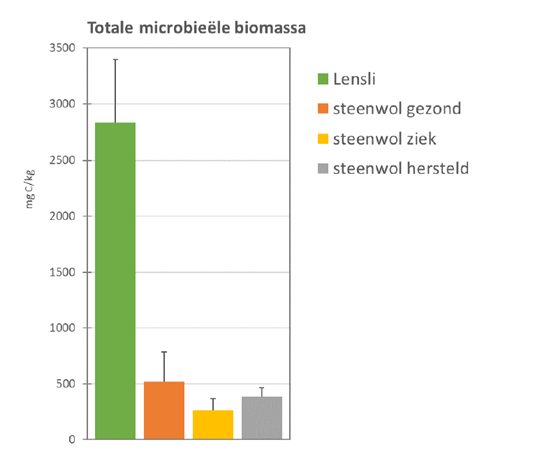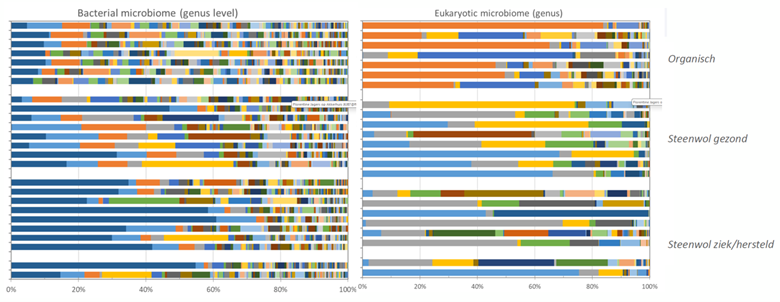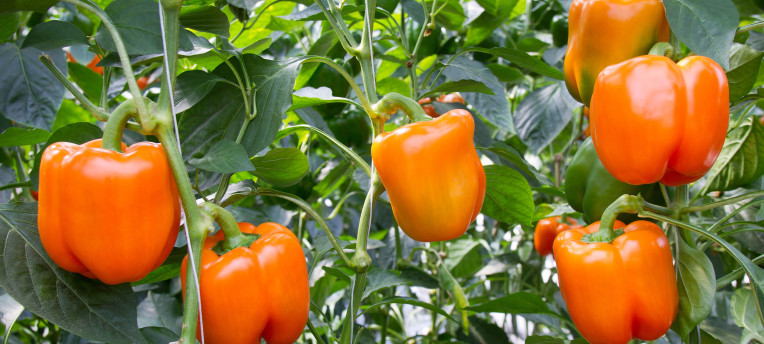Differences in microbiome may be the cause of pepper plant wilting
26 May 2025 - Horticulture
Pepper growers have been struggling for years with unexplained root problems, particularly when cultivating on mineral substrates. These issues can lead to growth stagnation and, in some cases, plant collapse. Notably, such symptoms occur less frequently when peppers are grown on organic substrates. Research by Eurofins Agro Testing Wageningen suggests that differences in the microbiome may play a role.
The root problems in pepper cultivation are persistent and hard to diagnose. In many cases, plants suddenly wilt without a clear cause. Since growers have observed that plants perform better on organic substrates, more and more companies are switching from mineral substrate to these organic alternatives.
Investigating the causes of wilting
To gain more insight into the phenomenon, pepper grower VD Holland, substrate supplier Lensli, and Eurofins Agro Testing, in collaboration with the growers’ association Harvest House, conducted a large-scale field trial. This practical trial focused on examining the effects of various cultivation measures, such as adjusting plant load and identifying the causes of wilting.
Frank Hoeberichts, Product Manager Horti and Team Leader of Plant Health at Eurofins Agro Testing, led the phytopathological part of the research alongside the Plant Doctors team. “Fusarium oxysporum is often linked to wilting plants,” he explains. “However, our research showed that this fungus is not always present in diseased plants. Moreover, Fusarium can be both a cause and an effect of a weakened plant.”
Examining soil life
To better understand the root environment, samples were periodically taken from peppers grown on both mineral substrate and organic substrates. These samples were analysed using the Soil Life Monitor and microbiome profiling.
The results are telling. The Soil Life Monitor (see Figure 1) revealed significantly more microbial biomass in organic substrates than in mineral substrates. While healthy slabs often contain more biomass than diseased ones, they still fall short compared to the organic variants. In the organic material, the fungus-to-bacteria ratio was more favourable, and the diversity of microorganisms was higher.

Figure 1: Soil Life Monitor results for organic and mineral slabs in pepper cultivation. Source: Eurofins Agro Testing 2024.
Microbiome analyses (see Figure 2) further revealed that microbial diversity – for both bacteria and fungi – is greater in organic substrates. Moreover, a higher presence of ‘positive’ microorganisms was found; species associated with plant health and resilience.

Figure 2: Microbiome profile in organic and mineral slabs in pepper cultivation. Each bar represents a sample; each colour a different species. Source: Eurofins Agro Testing 2024.
No definitive answers yet, but valuable insights
Organic substrates generally host a richer and more diverse microbiome than mineral ones,” concludes Hoeberichts. “And we find more microbes there that are considered beneficial.” Still, it remains difficult to draw definitive conclusions. “We lack sufficient knowledge about which species are beneficial and what roles they play. Moreover, the differences between healthy and diseased slabs are small, and the microbiome continuously evolves during cultivation.
He concludes: “The research offers valuable leads for developing more robust cultivation systems. Pepper growers will certainly apply new insights in the coming years, and Eurofins Agro Testing will continue expanding microbiome knowledge. Together, we are working toward a healthier future for pepper cultivation.”






